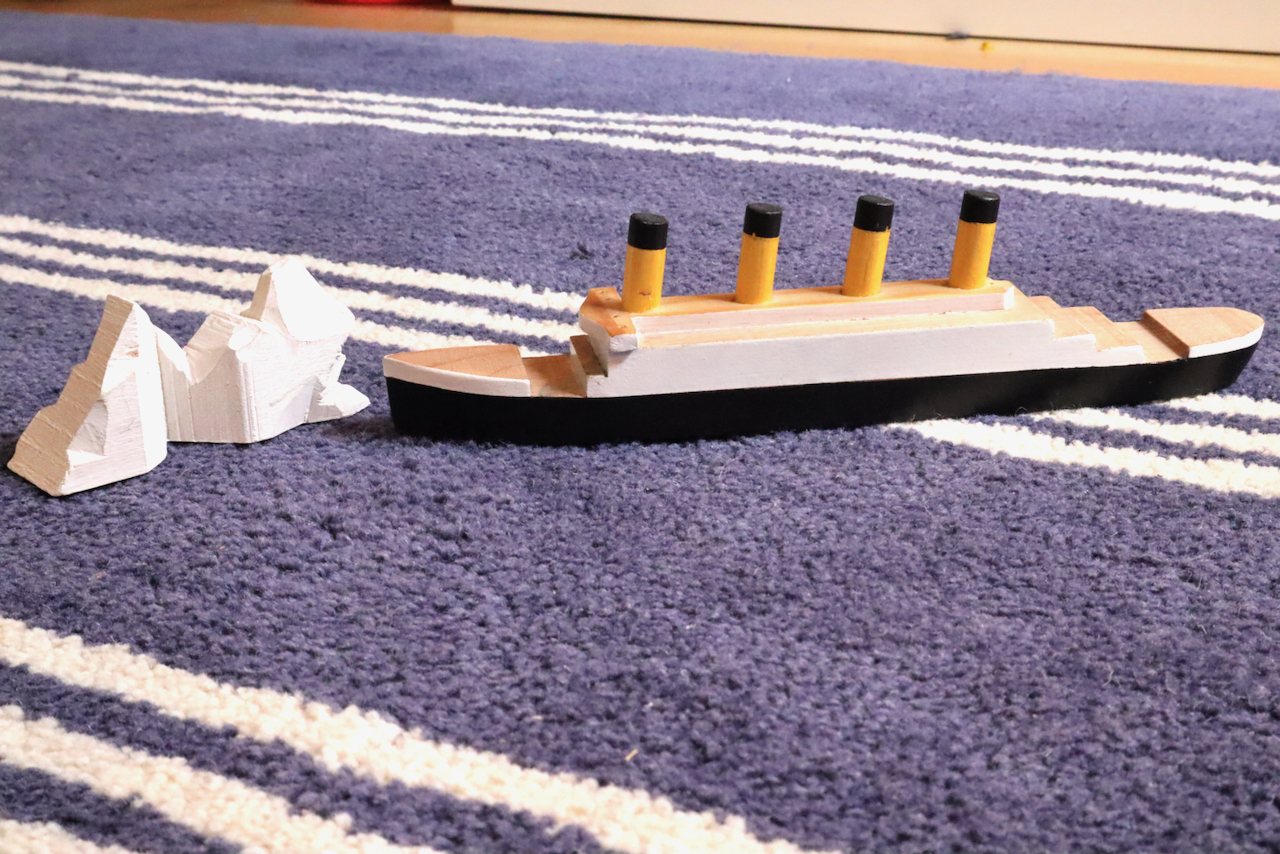We may receive a commission when you use our affiliate links. However, this does not impact our recommendations.

Only a handful of tools are needed to recreate this iconic vessel.
A few years ago, I crafted three identical waterline wooden toy ships based on the iconic design of the RMS Titanic and its sister ships, the Olympic and Britannic. My iterations of these ships were simple, excluding masts and delicate parts, as these models were intended to be used as toys or as nostalgic shelf or desk decor. Waterline ship models lay flat on surfaces such as tables or carpets, allowing a child to play with them while also serving as beautiful decor pieces.
In a series of blog entries about the USNS Comfort, a hospital ship deployed during the COVID-19 pandemic in the New York area, I showed a more elaborate waterline ship model. However, this model of the Titanic is much simpler and requires significantly less time to build.
I plan to continue publishing designs and stories on how to build other iconic vessels from time to time. The main tools you need for this project are a bandsaw or coping saw, a drill (ideally a drill press), and a few hand tools. Building a ship like this is a perfect project to invite a young family member to join and introduce them to the beauty of woodworking.

Design
My design is based on a few images and scale drawings I found online, such as this one. If you search for “RMS Titanic drawings and plans,” you’ll retrieve a wealth of technical information. I specifically looked for a top view of the decks and a side view of the ship to scale down and use as outlines for cutting on the bandsaw. Attempting to scale down every detail is impractical, so strive for simplification and increased definition. For example, when I interpreted the side view of the ship’s decks, I increased the proportional height of each deck component to better identify and highlight it. Check the pictures below to get a sense of my adaptation process.


Building a Template
If you plan on making multiple projects, consider creating one or two building templates. The most important template is the top view of the ship deck, denoting the bow, the deck, and the stern curvatures. You can choose to make only the starboard or port side of the top view and then flip it to complete the contour.
You can also make another template of the ship’s side view, but I skipped this step. Instead, I used the first ship blank (after cutting it on the bandsaw) as a template to transfer the design onto the subsequent blanks.
Production Begins
Mill a dimensional blank to match the length of the deck, its width, and the height of the ship from the waterline to the smokestack bases. Draw the side view of the ship on the blank using a template or freehand, then cut away the outline using a bandsaw or hand saws.
Next, place the deck template on top of the sawn blank and outline the top view or deck. Return to the bandsaw and saw off the blank’s top view to reveal the completed hull.

First, cut the side view and then the top.


In the next entry, I will talk about completing the ship’s superstructure.
Here are some supplies and tools we find essential in our everyday work around the shop. We may receive a commission from sales referred by our links; however, we have carefully selected these products for their usefulness and quality.








